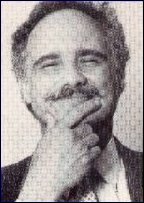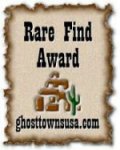This webpage is dedicated to my children, Jennifer Willow Johnston and Maxwell James Bourasaw. And to the memory of my late mother and father, Hazel Nadine Kirks Bourasaw (1908-1996) and Victor Andrew Bourasaw (1901-1982), who moved here in 1948. And to my late brother, Jerry Roger Bourasaw (1935-2000), who graduated from Lyman Grade School in 1949 and Sedro-Woolley High School in 1955. He knew in his soul that it don't mean a thing if you ain't got that swing.
Go to this Journal site to see a map of the Skagit area and many others.
We especially want to thank Berniece Leaf, Pat Hegg Brown and Loren, Paula Thomas, Tom Robinson, Donna Sand, Dr. Jesse Kennedy and Dan Royal for everything they have contributed to this research project. And I thank Cookie Beecher, the former editor of the Courier-Times, back in its old independent days, while it was still on Metcalf Street. She welcomed me home to Sedro-Woolley, just after New Year's Day 1992, and quickly became my dearest new friend, as well as mother's. She has been the common thread in my experience back in town, now for almost 20 years. My grammatical mentor, she who must be obeyed, and the sister I never had.
|
- Editor: Noel V. Bourasaw
- Webmaster: Raoul Dangerfield
- Patron saints: Guy LePetomane and Dexter Gordon
- Band director: Prof. Harold Hill
- Spring Chicken & Patron/longest supporter: Berniece Leaf
- Friend and road-trip companion for many decades: Val Hanchett, our own Prince Valiant
- Partner in historical crime: Dan Royal
- Ace researchers who share background material: Roger Peterson about Sedro-Woolley and Tom Robinson about the western section of Skagit county; Larry Spurling, who has transcribed more than three dozen stories (including many of Ray Jordan's) plus many of his own family stories; plus dozens of descendants of pioneer families. And the sweetest girl/researcher of them all, Donna Sand, who has forgotten more about Whatcom County from her research than we will ever know. She could write several books.

|
Brevet Corporal Bourasaw; Regular Army 1963-66; Vietnam-era veteran; 4th Armored Division; Known By Their Deeds Alone

|
|
Noel Bourasaw is a native of Missouri and moved with his family at age 4 to a farm near Sedro-Woolley in the old Utopia area near the Skagit. After graduating from high school here, he studied at Western Washington State College. After writing for several magazines and newspapers and wine publications, and serving as the first executive director of the Washington Wine Institute, he returned to Sedro-Woolley. For the last nineteen years he has been researching about Skagit county in libraries and museums all over the country and interviewing descendants of county pioneers, both in person and over the internet. He is working on a book: Humbug, the biography of Mortimer Cook, founder of Sedro. And he is revising the manuscript for a once-delayed book, The Old Soldier Goes Fishing, about Frank Wilkeson, the New York Times columnist of the 1890s who lived in Skagit, Whatcom and Cheland counties.
|

 810 Central Ave.,
810 Central Ave., 


